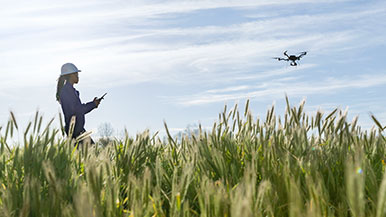protecting the environment
delivering the energy the world needs while protecting the environment

environmental focus areas
Managing our environmental impacts is how we get results the right way. From planning and construction through operations and asset retirement, we work to improve our environmental performance and reduce potential impacts of our activities using our Operational Excellence Management System. Our efforts are focused on:
preventing and mitigating the consequences of accidental releases
managing waste and wastewater
conserving and protecting water and biodiversity
managing waste and wastewater
conserving energy
retiring idle assets and reclaiming sites with residual environmental impacts
how we steward responsible water management
Water is vital to our operations as we develop and supply energy to meet the world’s growing demand. We strive to responsibly and efficiently use water across our operations.
Our water management strategy aims to improve our performance in three areas: sourcing, reusing and disposal. We work together with industry to explore technological improvements to reduce our water usage.

Chevron Canada is utilizing water reservoirs for its hydraulic fracturing completions operations in the Kaybob Duvernay Program.
In our shale and tight operations in Alberta, we use water from a variety of freshwater and non-potable sources during hydraulic fracturing operations. Our aim is to reduce or eliminate our reliance on potable freshwater, where possible. Non-potable sources can include recycled flowback and produced or processed water, non-potable groundwater sources, treated municipal or industrial wastewater and effluent, and deep groundwater saline sources.
Flowback water from the hydraulic fracturing process and produced water from the operational phase is transported by truck and pipeline to third-party waste management operators for disposal. We dispose all flowback water in accordance with government regulations at designated facilities.
what is flowback?
what is produced water?


